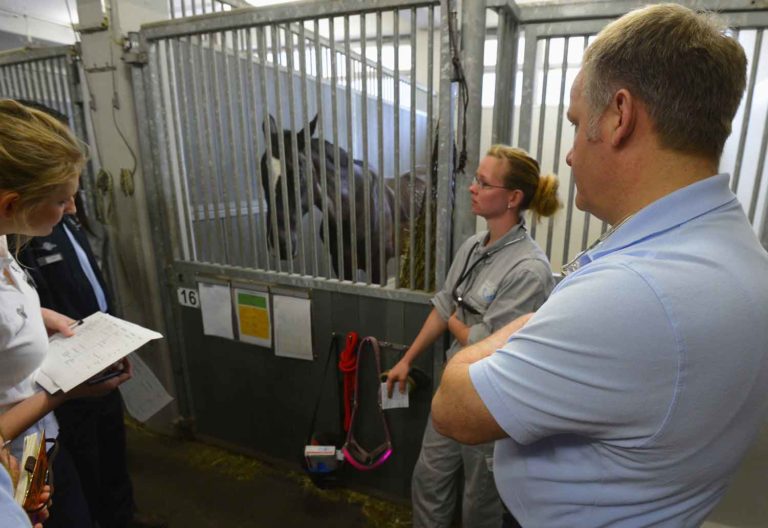
One of the most common causes of hind-limb lameness in horses originates from the proximal suspensory ligament/distal tarsus and its associated structures—the dense fascia and the cannon bone, explained Sherry Johnson, DVM, MS, PhD, Dipl. ACVSMR, senior partner at Equine Sports Medicine and Rehabilitation, LLC in Pilot Point, Texas/Scottsdale, Arizona, during a “Burst” session at the 2024 American Association of Equine Practitioners Convention.
“Magnetic resonance imaging (MRI) of injured hind suspensory ligaments often shows enlargement of the ligament, dorsal border tearing, and loss of normal ligamentous architecture,” she said.
Proximal Suspensory Ligament Rehabilitation Goals
The main goals for rehabilitating the proximal suspensory ligament are threefold:
- Restore ligamentous function.
- Mitigate pain.
- Maintain physical condition in the face of limited workload.
“We need to balance mitigating pain and rebuilding strategies to optimally return to athleticism,” said Johnson. “And the main questions owners always ask are how long is this going to take, and how much will it cost?”
Three Phases of Proximal Suspensory Ligament Rehabilitation

Johnson described three overlapping phases of rehabilitation:
- Phase 1: Pain modulation, which involves strategies such as transcutaneous electrical nerve stimulation (TENS), icing, rest, and medical management.
- Phase 2: Rebuilding, which incorporates targeted strength training, resistance bands, and aquatic exercise (when indicated).
- Phase 3: Incorporation of discipline-specific workload strategies to smooth the transition back to eventual ridden work.
For mild Grade 1 or 2 lamenesses, Johnson said it might be possible to go straight to Phase 2 and spend only two to three months there, whereas Grade 3 or 4 injuries might require more time, even up to four to six months, in Phase 1 alone.
“My favorite rehabilitation tip is how to effectively ice the hind suspensory with crushed ice in water,” Johnson said. “Various commercial systems are available.”
Phase 2 rehabilitation strategies often incorporate balance pads, core physiotherapeutic exercises, ground poles, surface changes, and modification of exercise variables, including frequency, duration, and speed. Phase 3 rehabilitation strategies are designed to recreate the athletic scenario and include aerobic, anaerobic, and sport-specific maneuvers.
“When rehabilitating a proximal suspensory, we need to consider the value of planned increases and decreases in workload and loading for bone versus soft tissue to avoid reinjury,” said Johnson. “There is no one size fits all.”
Related Reading
- Equine Rehabilitation Basics
- Understanding the Biomechanics of the Horse’s Fetlock Joint
- Superficial Digital Flexor Tendon Treatment
Stay in the know! Sign up for EquiManagement’s FREE weekly newsletters to get the latest equine research, disease alerts, and vet practice updates delivered straight to your inbox.

![[Aggregator] Downloaded image for imported item #18782](https://s3.amazonaws.com/wp-s3-equimanagement.com/wp-content/uploads/2025/11/03125751/EDCC-Unbranded-13-scaled-1-768x512.jpeg)
![[Aggregator] Downloaded image for imported item #18375](https://s3.amazonaws.com/wp-s3-equimanagement.com/wp-content/uploads/2025/09/30140031/EDCC-Unbranded-26-scaled-1-768x512.jpeg)

